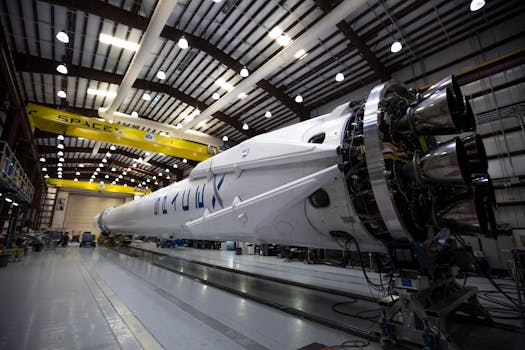
The Future of Satellites: Advancements and Innovations in Space Technology
The future of satellites is Future of satellites, and it is an exciting time for the industry. With the increasing demand for satellite-based services, the technology is advancing at a rapid pace. From improved communications to enhanced navigation, satellites are playing a vital role in our daily lives. In this article, we will explore the latest developments and trends in the satellite industry and what we can expect from the future of satellites.
Advancements in Satellite Technology
One of the most significant advancements in satellite technology is the development of smaller, more efficient satellites. These satellites, known as smallsats or cubesats, are designed to be more cost-effective and flexible than traditional satellites. They are also easier to launch and can be used for a variety of applications, including Earth observation, communications, and navigation. For example, the company Planet Labs has launched a constellation of smallsats that provide high-resolution images of the Earth, which can be used for applications such as agriculture, forestry, and disaster response.
Another area of advancement is in the field of satellite propulsion. New technologies, such as electric propulsion and advanced ion engines, are being developed to improve the efficiency and longevity of satellites. These technologies will enable satellites to stay in orbit for longer periods and to maneuver more efficiently, which will reduce the cost of satellite operations and improve their overall performance. For instance, the European Space Agency’s (ESA) Gaia mission has used electric propulsion to create a highly accurate 3D map of the Milky Way galaxy.
Innovations in Space Exploration
The future of satellites is not just about improving existing technology, but also about exploring new frontiers in space. With the advent of private space companies such as SpaceX and Blue Origin, the cost of access to space is decreasing, and new opportunities for satellite-based missions are emerging. For example, SpaceX’s Starlink constellation aims to provide global internet coverage, while Blue Origin’s New Armstrong program is developing a lunar lander capable of taking humans to the Moon.
One of the most exciting areas of innovation is in the field of satellite-based astronomy. Next-generation telescopes, such as the James Webb Space Telescope and the Square Kilometre Array, will enable scientists to study the universe in unprecedented detail. These telescopes will be used to study the formation of galaxies, the properties of dark matter, and the detection of exoplanets. The James Webb Space Telescope, for instance, will be used to study the formation of the first stars and galaxies in the universe.
Challenges and Opportunities
While the future of satellites looks promising, there are also challenges that need to be addressed. One of the biggest challenges is the issue of space debris. As the number of satellites in orbit increases, the risk of collisions and the accumulation of debris also increases. This can have serious consequences for satellite operations and the environment. To mitigate this risk, companies such as OneWeb and Amazon’s Kuiper Systems are developing technologies to de-orbit satellites at the end of their life, reducing the amount of debris in orbit.
Another challenge is the issue of spectrum allocation. As the demand for satellite-based services increases, the need for more spectrum becomes critical. This requires international cooperation and agreements to ensure that the spectrum is used efficiently and effectively. The International Telecommunication Union (ITU) plays a crucial role in regulating the use of spectrum for satellite communications, ensuring that the limited resource is used to benefit humanity as a whole.
Despite these challenges, the future of satellites offers many opportunities for innovation and growth. The development of new technologies and applications will create new markets and industries, and the use of satellites will become more widespread and integrated into our daily lives. For example, the use of satellite-based communications will become more prevalent in remote and underserved areas, providing critical connectivity to communities around the world.




